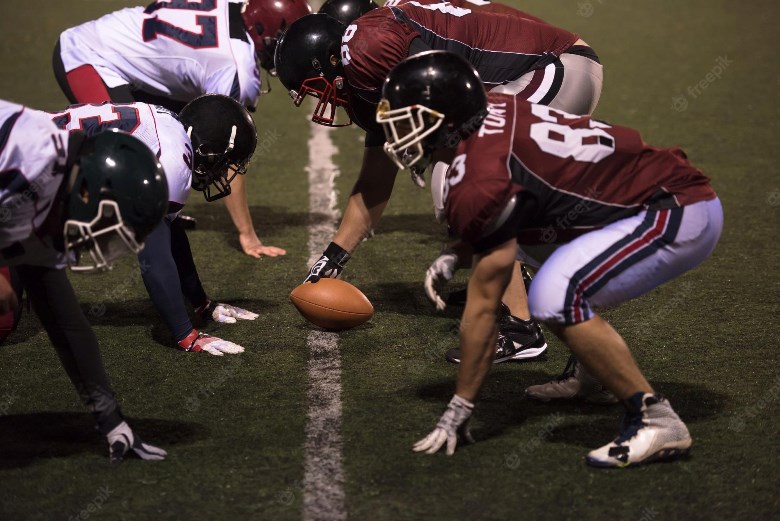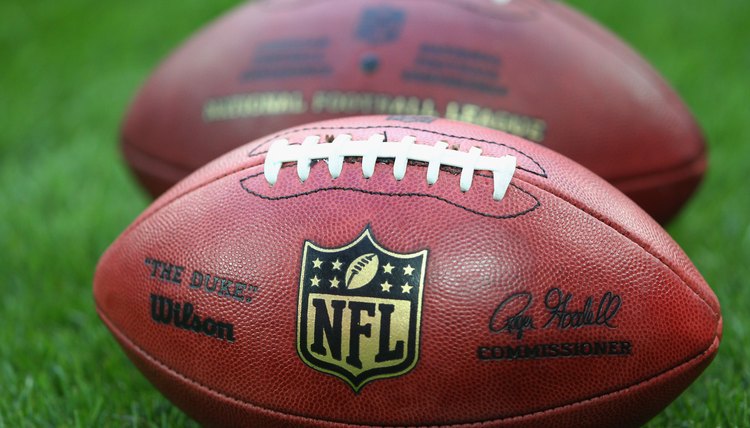American football, often just called “football” in the United States, has a unique and intriguing history. The name itself can be confusing to those more familiar with soccer, known as football in most of the world. We know you are also curious why American football is called Football, so let’s dive into the roots, evolution, and reasons behind the name “American football.” Understanding this name’s origin requires a journey through history, culture, and sports evolution, highlighting the fascinating blend of traditions and innovations that led to today’s game.
The Origins of American Football
The Early Days of Football
The game we know as American football has its origins in various forms of football played in England. These early games combined elements of both rugby and soccer, resulting in a hybrid that set the stage for the uniquely American version. In the early days, the rules were far from standardized, leading to many regional variations and interpretations of what constituted “football.”
The Rugby Influence
- Rugby, with its rough and tumble style, contributed significantly to American football. The game’s physical nature, the focus on carrying the ball, and the strategic depth came from rugby traditions.
- Players tackled each other with vigor, much like in modern American football, and the game’s dynamic, fast-paced nature was a precursor to the thrilling spectacles we see today.
- The scrimmage, a key feature in rugby, influenced the development of the line of scrimmage in American football. This element brought a level of structure and strategy that differentiated it from other forms of football.

The Soccer Influence
- Soccer, known for its strategic play and kicking, also influenced American football. The emphasis on scoring goals by kicking the ball into a net carried over into early American football rules.
- Kicking remained a significant part of the game, seen today in field goals and punts. This blend of kicking and carrying the ball provided a unique blend of strategies that defined the sport.
- Early American football rules borrowed elements like the use of a round ball and some kicking techniques. These influences helped shape the initial gameplay and tactics, although they eventually evolved to suit the distinct American style.
The Birth of American Football
In the mid-19th century, American colleges began to play their versions of football, which mixed rugby and soccer rules. The sport quickly evolved into something unique, with distinct rules and styles emerging from different schools. This period was marked by experimentation and adaptation, laying the groundwork for the modern game.
The 1869 Game
- The first intercollegiate football game took place on November 6, 1869, between Rutgers and Princeton. This game looked more like a soccer match, with players primarily using their feet to move the ball.
- Despite its similarities to soccer, the game was a significant step towards the football we know today. It demonstrated a growing interest in football among American colleges and showcased the potential for a new type of game.
- The match’s rules and format were a blend of various influences, reflecting the transitional nature of the sport at that time. It was an early experiment that highlighted the flexibility and adaptability of football as it sought its unique identity.
Walter Camp’s Influence
- Known as the “Father of American Football,” Walter Camp played a crucial role in developing the game’s distinctive rules. His contributions were instrumental in transforming the chaotic early versions into a structured sport.
- Camp introduced the line of scrimmage, the system of downs, and the concept of the quarterback. These innovations brought a new level of strategy and organization to the game, setting it apart from its rugby and soccer roots.
- His vision and leadership helped standardize the rules, making the game more accessible and enjoyable for players and spectators. Camp’s impact is still felt today, with many of his ideas forming the foundation of modern American football.
Evolution of the Name
Why “Football”?
Despite the heavy use of hands in American football, the name “football” stuck. Let’s explore why. The name’s persistence highlights the complex interplay of tradition, evolution, and cultural identity that shaped the sport.
Historical Context
- The term “football” was a generic term for all games played on foot, as opposed to on horseback. This distinction was important in the early days of the sport, differentiating it from equestrian activities.
- Early forms of the game involved significant kicking, aligning with the name. Even though modern American football emphasizes carrying and throwing, the original name reflected the game’s broader roots.
- The term “football” encompassed a variety of styles and rules, all linked by the common theme of being played on foot. This historical context helps explain why the name persisted, even as the game evolved significantly from its origins.
Differentiation from Soccer
- As soccer and rugby formalized their rules, American football continued to evolve independently. This divergence led to distinct identities for each sport, including their names.
- To distinguish their sport, Americans started calling their game “football” and referred to soccer by its British name. This naming convention helped create a clear distinction between the two sports in the American context.
- The evolution of American football into a unique sport with its own rules and style necessitated a distinct name. “Football” was retained due to its historical roots and the significant role of kicking in the game’s early versions, even though the modern sport relies more on other forms of play.

Popularity and Acceptance
The 20th Century Boom
- By the early 20th century, American football had become incredibly popular in the United States. The sport’s growth was fueled by increasing media coverage, community support, and the establishment of organized leagues.
- College football, in particular, drew massive crowds and widespread media attention. The passionate rivalries and rich traditions of college football helped solidify the sport’s place in American culture.
- The game evolved rapidly during this period, with new rules and strategies enhancing its appeal. The sport’s dynamic nature, combined with its deep-rooted traditions, made it a beloved pastime for many Americans.
The NFL and Cultural Impact
- The establishment of the National Football League (NFL) in 1920 solidified the sport’s name and place in American culture. The NFL provided a professional platform that elevated the sport’s profile and popularity.
- Television broadcasts and iconic events like the Super Bowl helped cement “football” as a uniquely American pastime. The Super Bowl, in particular, became a cultural phenomenon, attracting millions of viewers and showcasing the sport’s spectacle and excitement.
- The NFL’s success transformed American football into a major entertainment industry. The league’s ability to adapt and innovate has kept the sport relevant and engaging for generations, making it an integral part of American identity.
Modern Perceptions
American Football vs. Global Football
The naming convention still causes confusion globally. Here’s how we navigate it today. Understanding the differences and similarities between American football and soccer can enhance our appreciation for both sports.
Global Terminology
- Outside the U.S., “football” typically refers to what Americans call soccer. This difference in terminology reflects the distinct cultural contexts and histories of the two sports.
- Understanding these differences is key to appreciating the cultural distinctions. Recognizing that both sports have rich traditions and passionate fanbases can foster a greater appreciation for their unique contributions to the world of sports.
- The global appeal of soccer and the growing international interest in American football highlight the diverse ways that the term “football” is used and understood around the world. This diversity enriches the global sports landscape, offering fans a wide range of experiences and perspectives.
Embracing Diversity
- Both sports share passionate fanbases and rich histories. Celebrating the differences and commonalities between American football and soccer can help bridge cultural gaps and promote mutual understanding.
- Celebrating both American football and soccer can bring people together despite the naming differences. The shared love of sports can unite communities and foster a sense of global camaraderie.
- Embracing the diversity of football in all its forms allows us to appreciate the unique qualities and traditions of each sport. This inclusive approach enhances our enjoyment and deepens our connection to the global sports community.
The Future of the Name
As American football continues to grow internationally, its name might evolve or coexist with the global understanding of football. The sport’s expansion presents opportunities and challenges for how it is perceived and named.
International Expansion
- The NFL’s efforts to promote the sport overseas could influence how the name is perceived. International games and events introduce new audiences to American football, broadening its appeal.
- Hosting games in London, Mexico City, and other international venues broadens the sport’s appeal. These events provide a global platform for showcasing the excitement and intensity of American football.
- As American football gains popularity abroad, its name might be adapted to fit local contexts or coexist with the global understanding of “football.” This evolution reflects the sport’s dynamic and adaptable nature.
Cultural Integration
- Over time, American football might integrate more deeply into international sports culture. Increased exposure and participation can help bridge cultural gaps and foster a more inclusive sports community.
- This integration could lead to a more universal understanding and acceptance of the name. As fans around the world embrace the sport, the name “American football” might become more widely recognized and understood.
- The sport’s ability to adapt and evolve will be key to its international success. Embracing new audiences and cultures can enhance the sport’s global footprint and enrich its traditions.

Key Differences from Soccer
Rules and Gameplay
The Ball
- American football uses an oval-shaped ball, while soccer uses a round one. This fundamental difference affects how each game is played, from passing and catching to kicking and dribbling.
- The shape of the ball in American football allows for unique strategies and plays. The aerodynamic design enables precise throws and varied kicking techniques, while the round soccer ball lends itself to smooth dribbling and precise strikes. These differences in ball shape dictate the flow and tactics of each game, contributing to their distinct gameplay experiences.
Scoring
- Points in American football are scored via touchdowns, field goals, and extra points. Each method requires different skills and strategies, from advancing the ball through running or passing to accurate kicking under pressure.
- In soccer, goals are the primary way to score, achieved by getting the ball into the opposing team’s net. This simplicity in scoring encourages teams to focus on ball control, passing accuracy, and strategic positioning.
Field and Players
The Field
- An American football field is 100 yards long with distinct end zones at each end. The field’s layout and markings dictate where plays begin and end, influencing offensive and defensive strategies.
- A soccer field varies in size but is generally larger than a football field. It features goals at each end but lacks the gridiron markings found in American football, allowing for continuous play and fluid movement.
Team Composition
- American football teams have 11 players on the field at a time, each with specific roles and responsibilities. Positions range from offensive and defensive players to special teams specialists, requiring diverse skill sets and strategic coordination.
- Soccer teams also have 11 players, but the roles are more fluid and adaptable. Players often switch between offensive and defensive positions based on game situations, emphasizing teamwork and versatility.
Cultural Significance
American Football in Society
College and High School Football
- College football traditions and rivalries are deeply rooted in American culture. The annual matchups between historic teams like Alabama and Auburn or Michigan and Ohio State capture the attention and passion of fans nationwide.
- High school football games are community events, bringing together students, families, and local residents to support their teams. Friday night lights and homecoming games are cherished traditions that unite communities and celebrate local pride.
The Super Bowl
- The Super Bowl is one of the most-watched sporting events globally, showcasing the pinnacle of American football competition. The game’s halftime show, commercials, and cultural impact extend beyond sports, making it a cultural phenomenon.
- The Super Bowl’s ability to attract viewers from around the world underscores the global appeal and influence of American football. It serves as a showcase for athleticism, entertainment, and commercial innovation on a grand scale.
Football and Identity
Regional Pride
- Different regions in the U.S. have strong football traditions rooted in local history and culture. Teams like the Green Bay Packers and Dallas Cowboys have passionate fanbases that span generations and embody regional pride.
- The loyalty and dedication of fans reflect deeper connections to their communities and shared values. Football teams serve as symbols of identity and unity, rallying residents around shared experiences and triumphs.
A Reflection of Values
The sport’s popularity mirrors broader societal trends and interests, reflecting shifts in technology, media, and social dynamics. Football’s ability to adapt and evolve with the times ensures its continued relevance and appeal.
Football often reflects American values such as teamwork, perseverance, and strategy. The sport’s emphasis on discipline, preparation, and sportsmanship resonates with fans and players alike, reinforcing cultural ideals.

The Future of American Football
Challenges and Opportunities
Health and Safety
- Concerns about player safety and concussions are leading to changes in how the game is played. Innovations in equipment and rules aim to protect players better while maintaining the sport’s competitive nature.
- Research into head injuries and long-term health impacts is shaping policies and practices at all levels of football, from youth leagues to professional organizations.
Youth Participation
- Encouraging youth participation is crucial for the sport’s future. Initiatives to make the game safer and more accessible are essential for cultivating the next generation of players and fans.
- Youth football programs promote physical fitness, teamwork, and leadership skills, contributing to participants’ personal development and community engagement.
Technological Advances
Enhancing the Experience
- Technology is transforming how we watch and engage with football. Virtual reality, advanced analytics, and interactive broadcasts offer fans new ways to experience the game and deepen their understanding of strategies and player performances.
- Innovations in stadium design and fan engagement enhance the game-day experience, creating immersive environments that attract audiences and enhance their enjoyment.
Fan Engagement
- Social media and online platforms allow fans to connect with teams and players like never before. Interactive content, behind-the-scenes access, and real-time updates keep fans engaged year-round, fostering a sense of community and loyalty.
- The rise of fantasy sports and gaming apps adds another layer of engagement, allowing fans to participate actively in the sport’s narrative and outcomes.
Closing Thoughts
American football, despite its somewhat misleading name, is a deeply ingrained part of American culture. Its evolution from early soccer and rugby games to the modern spectacle we know today is a testament to the sport’s adaptability and appeal. Whether you’re a die-hard fan or a curious observer, understanding why American football is called “football” offers a glimpse into the rich tapestry of sports history and cultural identity.
FAQs
Why is American football called football if it’s mostly played with hands?
The name “football” comes from early games played on foot rather than on horseback, involving significant kicking. Over time, the game evolved, but the name persisted due to its historical roots and the broad category of games played on foot.
How did American football evolve from soccer and rugby?
American football developed from early versions of soccer and rugby played in American colleges, evolving its own unique rules and style. Innovators like Walter Camp played a pivotal role in shaping the sport’s identity and distinguishing it from its predecessors.
What role did Walter Camp play in American football?
Walter Camp, known as the “Father of American Football,” introduced key elements like the line of scrimmage, the system of downs, and the quarterback position. His innovations transformed the sport into a structured and strategic game, laying the foundation for its growth and popularity.
How has American football impacted American culture?
American football is a major cultural force, with college traditions, high school rivalries, and professional leagues shaping local identities and national pride. The sport’s influence extends beyond the field, influencing media, entertainment, and societal values.
What are the key differences between American football and soccer?
American football uses an oval-shaped ball, specific scoring methods like touchdowns and field goals, and involves distinct field markings and player positions. Soccer, in contrast, uses a round ball, primarily scores through goals, and features continuous play with fluid player roles and strategies.


